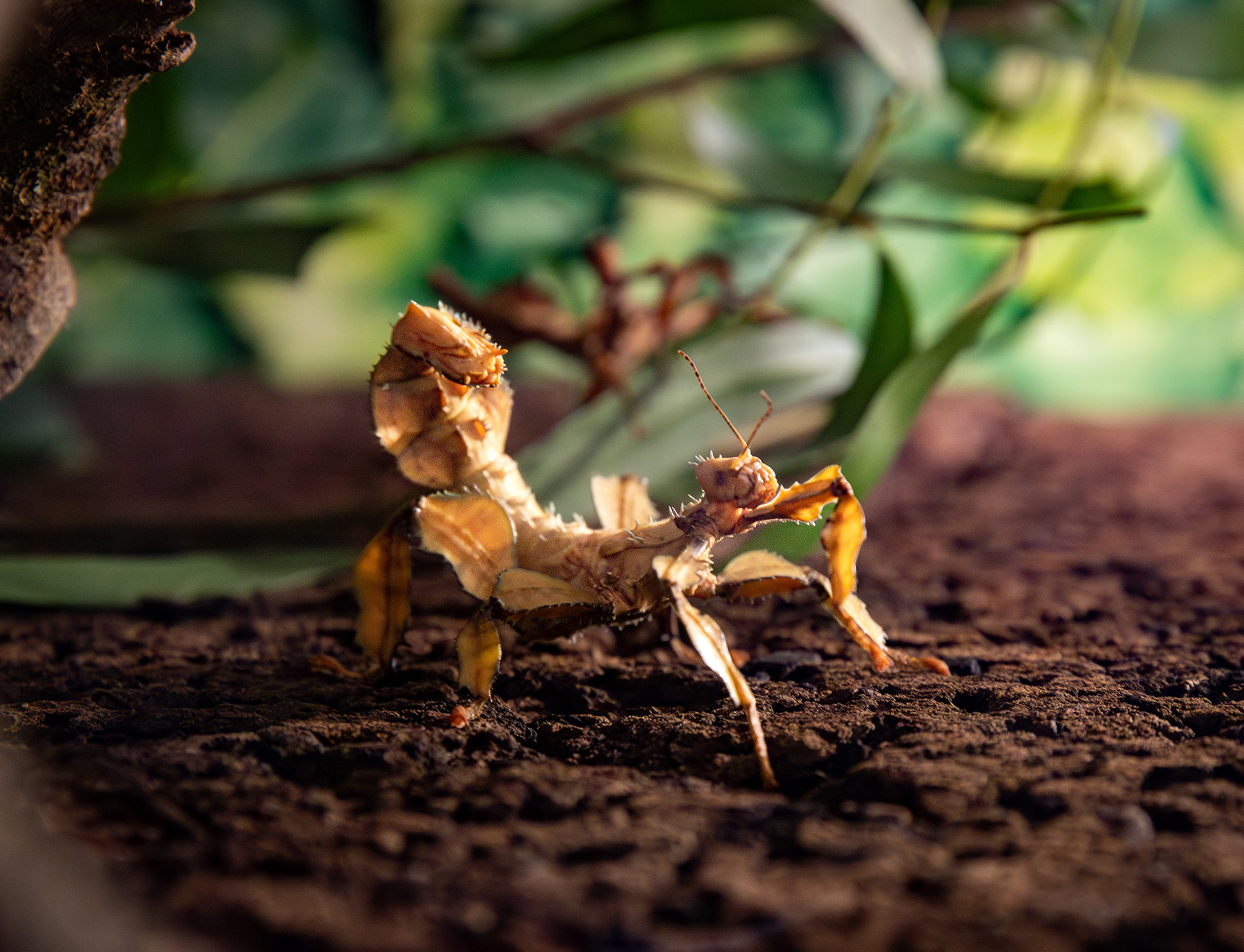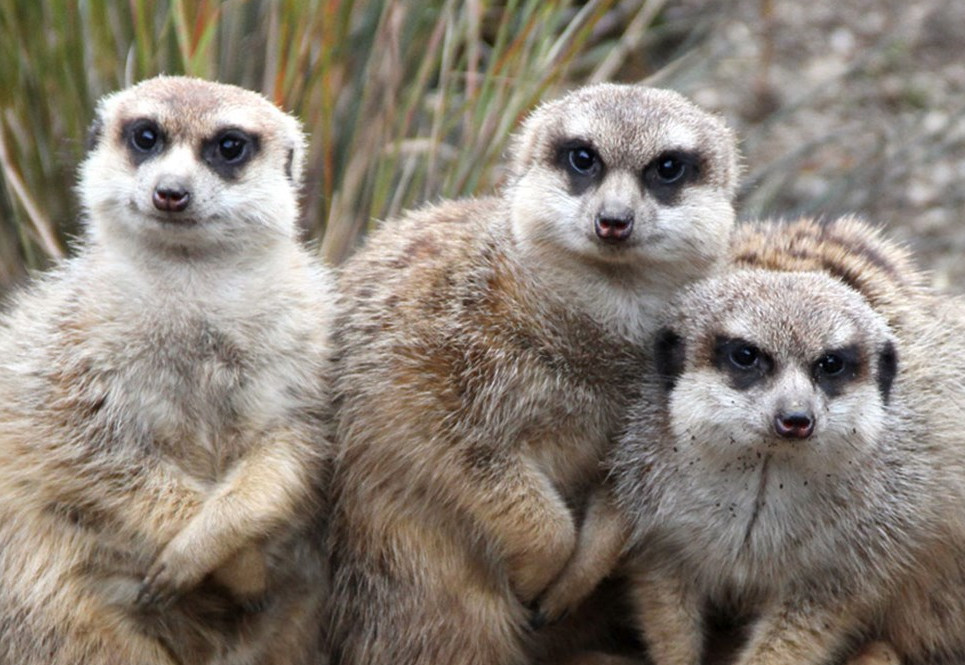Macleay's spectre
Extatosoma tiaratum

Macleay's spectre, also known as giant pricky stick insects, are native to the eucalyptus forests of Queensland and New South Wales in Australia.
Adult females are covered with thorn-like spikes for defence and camouflage. Males lack the thorny growths except for spikes around their faces. They have long wings and are good flyers who readily take to the air if disturbed, while females cannot fly at all.
The species is so well camouflaged that even the most alert predators can walk right by one and not see it. This insect clings to branches and does a perfect imitation of the surrounding leaves. They can even change colour to match dying leaves or new ones.
You can find our Macleay's spectres in Wee Beasties.
Population
Unknown
Diet
Herbivore
Habitat
Rainforest
Fact file
When due to moult, Macleay's spectres will find a leaf to hang upside down from. It will then push its way out from its old skin and eat it
They can reach up to 15cm in length
Macleay's spectre eggs look a lot like seeds and ants often carry them to their nests, thinking they're food. The eggs stay warm in the ant nests and hatch safely. Young spectres look a lot like ants, so they walk out of the nest without attracting attention!
How we're helping
Like all the animals in our care, our Macleay's spectres are amazing ambassadors for their relatives in the wild and help hundreds of thousands of people connect with nature every year. They encourage visitors to learn about the threats facing wildlife and the action they can take to help create a world where nature is protected, valued and loved.
As a wildlife conservation charity, we care for the animals here at the zoo and work to protect species at risk around the world. From providing expertise in genetics and veterinary health, to protecting wild places with local conservation partners, and even restoring threatened species to the wild, we are active where we are needed most.
Find out more about RZSS conservation
